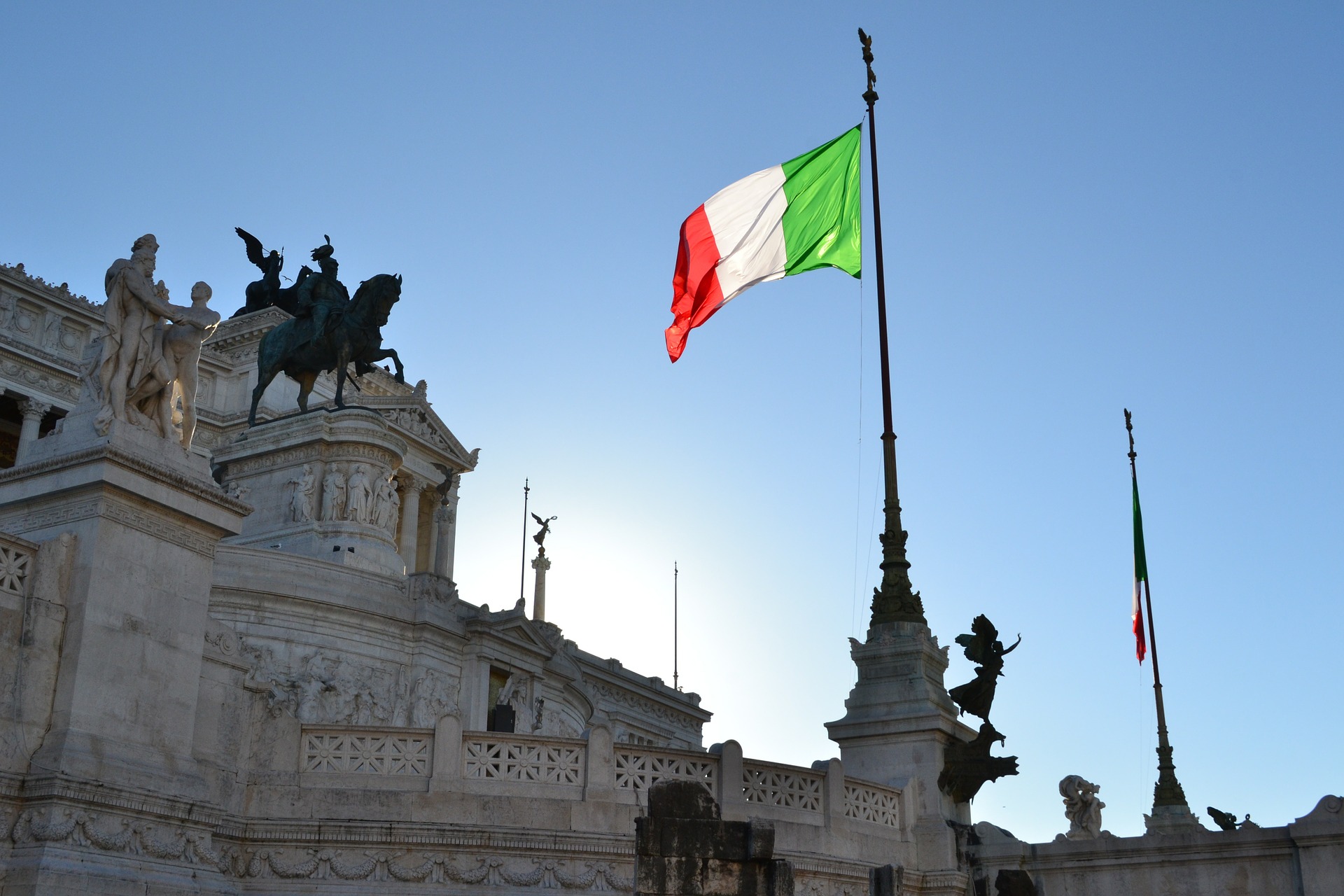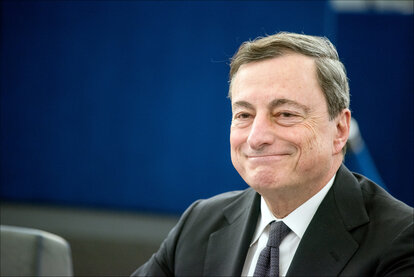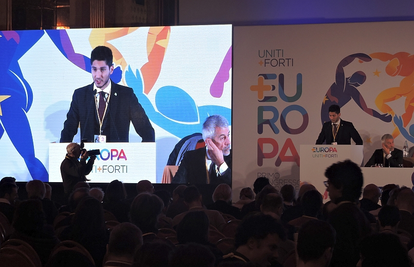Italy
Stable, Italian conditions

Italy
©Pixabay
Time to take stock: The Draghi government has been in office for a year - and will probably remain so until the end of the legislative period in 2023. That's good news for Europe.
Even if the Italian Republic is not in as bad a position in many areas as it often makes itself (and the German press) out to be - news about a country in crisis mode is something one is used to from Italy. A mountain of debt, a reform backlog, political instability and, most recently, the coronavirus pandemic are weighing heavily. But in the spring of 2022, Europe is looking to Italy with a great deal of optimism. The country has been swimming on a wave of success since the beginning of 2021: Last year, Italy won almost everything there was to win: from the Nobel Prize for Physics to the European Championship title of the "Squadra Azzurra" and Olympic gold in the men's sprint competition to winning the "Eurovision Song Contest." In Amnesty International's corruption perception index, Italy has improved.
And the country also experienced a political turning point when Mario Draghi took office. Moreover, since Sergio Mattarella's re-election as President of the Republic, it is clear that Italy remains stable. This is not a matter of course in a country where party and power struggles have regularly led to the collapse of the government for decades. All too often, a chronically divided, egocentric leadership is guided by personal interests instead of criteria for the common good. After a protracted election process for president, it almost looked as if the country would fall back into old, paralyzing patterns; "the orchestra plays while the Titanic sinks." But once again, Italy turned the wheel in the face of crisis and managed to remain politically capable at the last minute.
President Mattarella, old and new, ensures continuity for the continuation of the Draghi government until the end of the 2023 legislative term. It would have been time for a successor in the Quirinal Palace, such as the pro-European Justice Minister Cartabia, law professor and former member of the Italian Constitutional Court. She was elected by the liberals in Parliament. From the outset, the liberal Più Europa and Azione parties favored Draghi's remaining in the prime minister's office, as his departure could have triggered a government crisis, delayed the implementation of reforms, meant early elections and a shift to the right. In the meantime, Draghi was considered a promising candidate and, with his authoritative manner and reputation, would certainly have been a good president of the republic, because Italian presidents have a central role as a stabilizing force in situations of political instability, in addition to representative tasks.

Mario Draghi, European Central Bank President in the plenary
©European Union 2016 - European Parliament.
Dream Team Mattarella and Draghi
It was Mattarella who, after the breakup of the Conte coalition, tasked former European Central Bank chief Mario Draghi with forming a cabinet of experts to guarantee stability. Draghi, a nonpartisan technocrat, was expected to lead the country out of the Corona crisis and ensure the drafting of the reconstruction plan, a detailed multiyear commitment to investment and reform that must be followed by any government in the coming years to access EU funds. Italy is the largest recipient of funds from the EU's Corona recovery package, worth about 200 billion euros. The EU disburses the aid in tranches. For the money to flow, there must be detailed evidence of how the money is being invested and what progress is being made. Given the unprecedented sum, this is a unique opportunity for money and reforms to coincide to modernize the country.
"I guarantee the reforms," Draghi said upon taking office, and he kept his word. With far-reaching structural reforms, he wants to tackle almost all of Italy's long-standing problems at once: from reforming the tax system to market liberalization to modernizing the administration and judiciary, ensuring sustainable growth, driving digital and green transformation and giving more weight to the development of the structurally weak south. Most recently, he pushed a judicial reform through Parliament to speed up the notoriously cumbersome legal system. The early retirement and citizen's allowances of the populist predecessor governments were adjusted. He has also set his sights on a law to simplify administrative procedures and reform social security networks and pensions.

Pixabay
The economy is making headway
The mood in the economy is good, with consumer and business confidence at pre-Corona levels. The stimulus program is having an impact. Italy has exceeded many forecasts with economic growth of 6.5% in 2021. This is the highest economic growth in nearly 30 years, according to the statistics office Istat. Of course, it is also an economic recovery because the previous downturn in 2020 as a result of the pandemic was so dramatic (the Italian economy contracted by almost nine percent) and Italy, like many other countries, is struggling with inflation and high energy and food prices. A sustained recovery of the economy is crucial to stop the debt spiral. According to the IMF, Italy's public debt to GDP ratio should fall from 155% to 150% in 2022 and 146% in 2026. Also dedicated to sustainable and structural growth is the draft budget for 2022, which includes tax cuts, investments and a reorganization of social spending aimed at increasing employment rates, especially among women and young people.
Stoically, Draghi pushes through uncomfortable decisions and, with the help of an army general as logistics chief, organized one of the most successful vaccination campaigns, but also the strictest package of measures in Europe. With a vaccination rate of 90% (at least 1 vaccination dose) far above the European average, he has almost achieved his goal of ensuring herd immunity. Mandatory vaccination is in place for certain occupational groups and the 2G rule is in place in much of public life. Due to falling infection figures, the mandatory masking outdoors was recently lifted. Depending on the data available, further relaxation could probably take place in mid-March and the state of emergency, which has been in place for a good two years, could be lifted.
Draghi's unagitated, authoritative style of government has created trust and prestige at home and abroad. Italian citizens' distrust of politics traditionally runs deep, but the vast majority support Draghi. He has also rehabilitated Italy as a credible, reliable partner at the European level. Draghi has authority across party lines. But there are signs of friction and rebellion within the huge coalition of "national unity" with completely different parties that are actually hopelessly at odds.

Piú Europa - Congress 2019 - Antonio Argenziano
©Pampuco Creative Commons
The Italian Liberals regroup
The capers of Italian politics are difficult for German observers to comprehend. Changing party affiliations and a tendency toward personalization make the fragmented party landscape confusing and lasting alliances difficult. After long negotiations, the two liberal, pro-European parties Più Europa and Azione joined together to form a political alliance. This is an important step toward creating a united, reform-oriented liberal party, because the numerous liberal microparties can only succeed in effectively filling a place in the political center if they are united. They passed the first stress test, the election for president, in close exchange and with the publication of a joint statement. Più Europa and Azione together have three deputies in the Chamber of Deputies and three senators. The new liberal-democratic alliance is consistently polling at five percent.
Its declared goal is to win more than ten percent of the vote in the next elections. To this end, a joint election program and communication initiatives are to be developed and, while preserving the respective identities and programmatic features, close cooperation is to take place within the alliance at national and local level. Più Europa is a member of the European Liberal ALDE, and the Azione party, which split off from the Partito Democratico as the liberal wing, has applied for membership. The alliance differs from the current center-right and center-left coalitions and takes a firm stand against populism in Italy. "The issue now is to work out a common program based on shared values," said Azione founder Carlo Calenda, who most recently ran for mayor of Rome and won nearly 20% of the vote. "Our mandate will be to reject populists and nationalists. The future of Italy depends on it." Emma Bonino, former European Commissioner, Italian Foreign Minister and member of Più Europa, said at the press conference, "We don't have the numbers yet, but we have the right ideas." Let's hope that Draghi's reform course can continue to be pushed by the pro-European forces in Italy after the next parliamentary elections, bringing new support to the parties of the political center.
Rahel Zibner is a project assistant at the Friedrich Naumann Foundation for Freedom's office for Spain, Italy and Portugal, based in Madrid.
